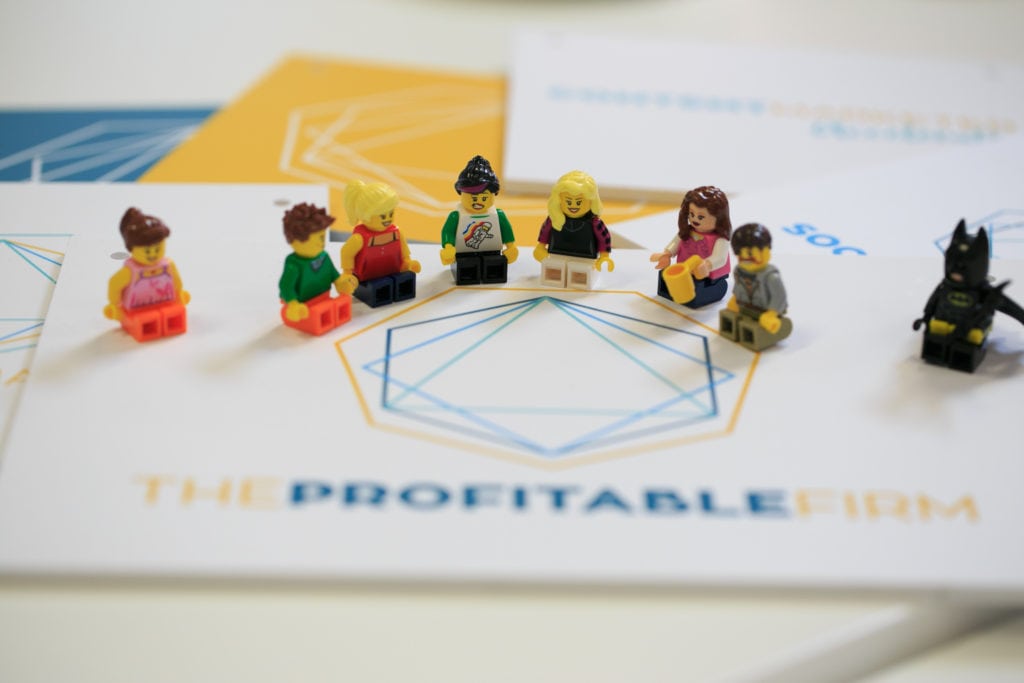
As an accountant, writing blogs can be a high-pressure situation. You want to make sure you strike the right tone.
Do you formalise everything, use accounting terminology, write like it’s an article for the ICAEW?
Do you go very conversational, friendly, relaxed – like you’re talking to a friend?
Do you include tax tables and links to other articles?
We had this conversation during our Accelerator group recently, and the question came up as to whether a ‘conversational language’ is the right thing to use for writing blog posts as an accountant.
I turned the question back to our members, and here are some of their comments, with a few additions from me!
“They should reflect the brand of your firm.”
Absolutely. There’s no absolute right answer to a question like this (not every single blog post in the world is going to have a conversational tone). The key is to determine what your brand is. Your style. Your tone of voice.
Identify the words you use, and don’t use. The style that appeals to your target audience, and to their needs. Most of all, the way you and your team speak and write on a regular basis.
You want the style of your blogs, and the style of everything else you write, to match.
“People can relate to the scenario. If you write it in a conversational tone, it is almost as if they and you are in the moment.”
As an accountant, you’re building a relationship with your prospective clients. Your buyer is looking for an accountant who can talk to them like a human being.
They’ve got Google to get basic answers to their questions – to ask HMRC or the IRS or some other official site. But their cry is, “what does it mean for me?”
When your blog post talks to them in a way that makes them feel as if they are sitting at your office or in a coffee shop getting an answer to their question, it builds a rapport faster.
“Sometimes it is annoying when someone has a great post but then starts being salesy for the last third. I like posts when it sounds like they are giving me advice in a conversation.”
We talked a lot about “salesy” posts in this particular Accelerator session. Unsurprisingly, accountants (like most people in the world) have a horror of things that are salesy.
If your post has a great conversational tone but then switches to a full-on sales pitch at the end, you’ll tune out. You realise they were being conversational to get your money – and you’re out.
This applies also to calls to action (CTA’s). You do not have to end every blog post with “To talk to the XYZ Accountancy team about any of the issues reflected in this post, ring us at the office on [number] or email us at [email address] or fill in this form.”
“Just let me decide,” the buyer is thinking. “If I want to ring you, or get in touch, I know perfectly well how to click the Contact tab on your website or fill in a form. You don’t have to push me into it.”
“It’s about what’s the best format to get your point across. And most of the time that’s conversational.”
It’s always right to think about the format that suits your buyer best. Is a blog post what’s needed? Or a PDF document, a download, a video, an infographic?
Whatever will get your point across best does the job. This applies also to the length of blog posts. If you need 2000 words to get your point across, use that many words. If you can do it in 200, that’s fine.
Google does smile on posts that lean towards the 1000+ word mark – but only if they’re relevant to you, your website, and the search terms. You’re not trying to trick Google into getting your blog higher in their search engine results by stuffing your blog with more words than it needs.
You also want to avoid being over-professional like the plague. We all agreed that ‘professional’ is equivalent to ‘boring’.
“Be yourself. Probably best not to pretend you are someone else. I did a conversational piece that was based on an actual conversation I had.”
If they’ve never connected with you before, your buyer is starting from a position of distrust. Skepticism. Uncertainty.
Pretending you’re someone else destroys any slight trust you’ve built when they find out the difference. Whether that’s writing differently, acting as if you have this huge firm when it’s really just you on your own and a part time employee helping you out, or using professional (boring) wording to sound more corporate, it won’t do you any favours.
Even the larger firms could benefit from having a friendlier and more personable tone. Even though your firm has hundreds of employees, people still do business with people. If your blog post sounds like a person (not a “marketing department”), you’re a step ahead.
“I use voice typing in Google Docs to get started – it’s a great way of getting words out of my brain and onto ‘paper’.”
One of the suggestions a few of our members had was to use voice typing or transcription services to record exactly what you’re saying – then tweak or edit it a little to fit the written word. (You could, if you’re really bold, leave it exactly as is…I dare you.)
Think about the blogs you enjoy. What do you appreciate about them? How’s the style and tone? Which ones stay in your inbox or get saved to a list?
Most of the time, it’s the ones that sound like the person who is writing them. I get blog post emails from Peter Shankman, Seth Godin, Chris Marr, Andy Bounds, Mark Schaefer, and many others. Every time, reading their blog or email is like I was sitting at the airport and suddenly realised that person is sitting next to me, and they start telling me a story.
A conversational style is human.
It’s real.
And it allows your buyer to connect with you as a real human.
That’s what they want!

